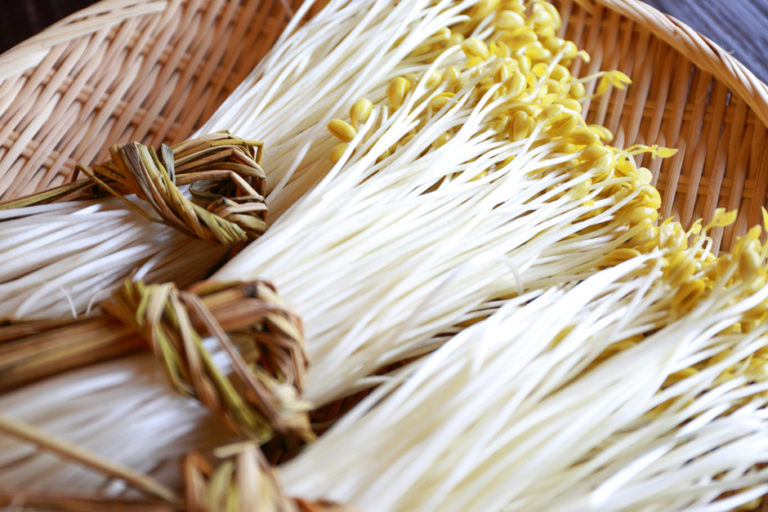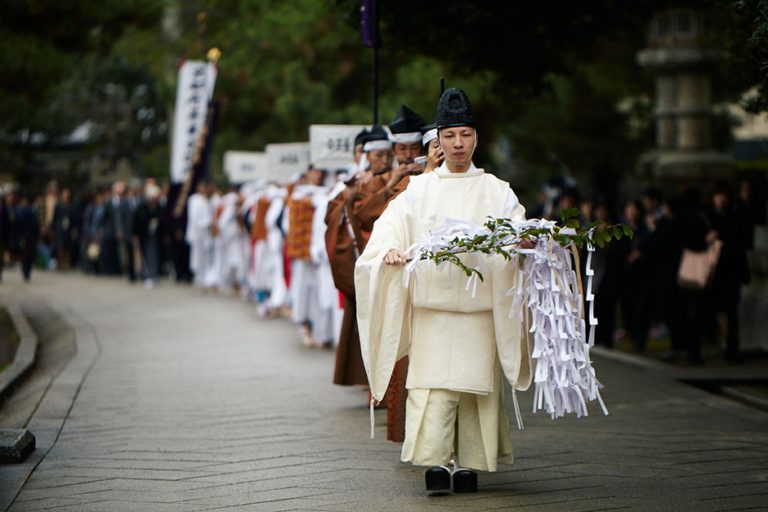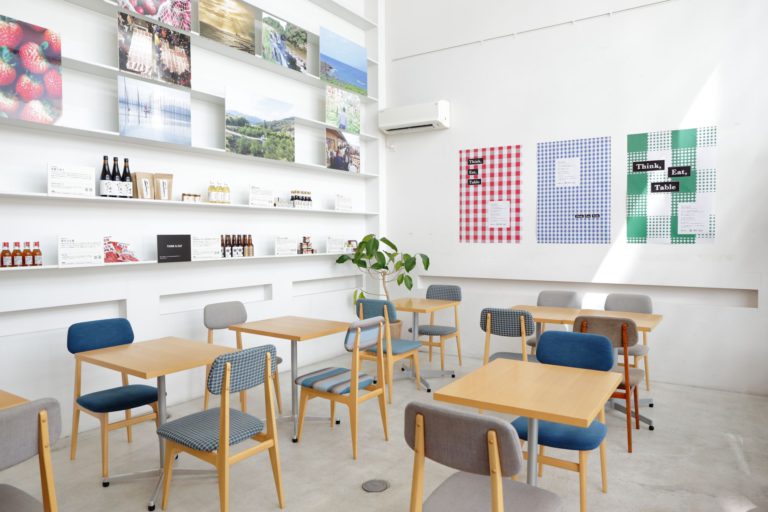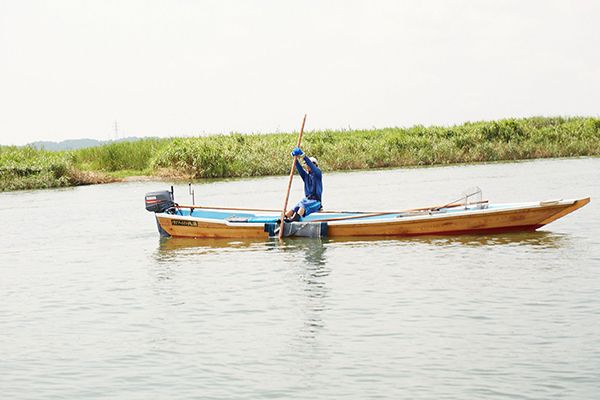SHUN CURATORS (April 2014)
No Matter How Much I Travel, Just Can’t Get Full Of Japan There’s No Other Place Like It
- "PAPERSKY" chief editor Lucas B.B.
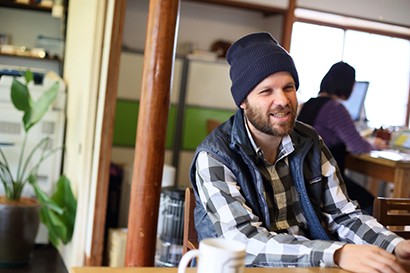
Using Japan as a hub, he has traveled the world and to every corner of the Japanese islands for coverage. We asked him to give us his opinion on Japanese culinary culture from the standpoint of a foreign resident.
We visited Lucas in a 70 year old refurbished Japanese home in the Shibuya district of Tokyo, remade into the offices of PAPERSKY. He had just finished work on the April 30 issue.
Mr. Lucas, you have just finished work on a feature segment covering the Sardinia islands of Italy. Why did you choose that particular region?
The selection process for PAPERSKY puts a lot of weight on factors like food you can only eat there, some ingredient only they use, fish that can only be caught there, something you can only taste there, and just how much of these things exist. This time I really wanted to do a feature segment about food, so I chose the rich enduring culinary culture of the Sardinia islands.
What were the most interesting parts of Sardinia?
An Italian friend recommended I visit, and to be honest it was a lot like Japan. The Sardinia island are floating over in the Mediterranean sea, surrounded on all sides by water, and the culture there is a mix of Spain, France, North Africa, and Italy. Both the food and the tableware are different from one place to another, depending on where you are on the islands. Like in Japan, if you go down to Kyushu or another prefecture, sometimes they’ll serve to you on bamboo tableware. Each area has it’s own unique flavor. There’s also a time mix, where you can still see remnants of old traditions. There’s a really magnificent culinary culture in Sardinia. I think the Japanese people would love it.
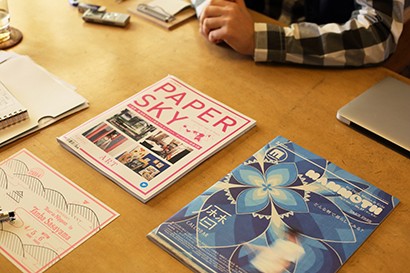
Shocking First Experience With Udon
From what I understand, you've been living in Japan for 20 years. When you were living in the U.S., how much did you know about Japanese food?
Before I came to Japan I was in San Fransisco, which just happens to have a Japan-town. I ate at a few of the Japanese restaurants, but I really never knew about anything other than sushi and tempura. These days ramen is getting really popular, there are a number of izakaya style places, and there’s a lot more general interest in Japanese food, but at the time it was all sushi or tempura.
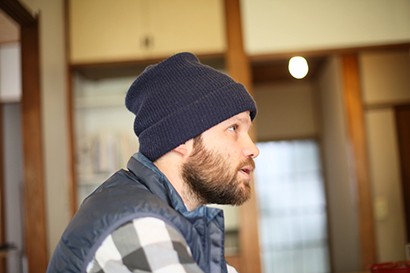
How was it after coming to Japan for the first time?
All of the food was delicious, especially Udon. At the time I had no money so I was living with a friend in Yuutenji, Tokyo. There was an udon shop nearby where I ate kenchin udon, udon with a lot of vegetables in it, every single day. Japan has this special piece of their culture called dashi (a unique type of broth), that we don’t have in the U.S., that astounded me, and the udon noodles are soft and chewy and delicious. There were times when I ate udon every day for a month.
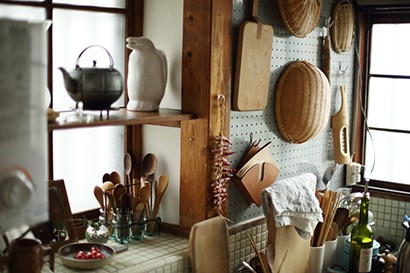
Was there anything else that surprised you about Japanese food?
The presentation is very different from the U.S.. Japanese restaurants don’t just appeal through taste, but show off the deliciousness of the meal through presentation. Everything from the ingredients, the tableware, and even the interior of the shop is important. It’s like telling a story. Where the ingredients came from, how it suits the season, everything goes in to presenting the food. That is what is so amazing about Japanese culture. I want every foreign visitor to Japan to gain a better understanding of that world view, even if it happens gradually.
You Can Live Here For 20 Years And Not Get Tired Of The Food.
Lucas you've travelled all over the world, and all over Japan as well. Were there any foods that have left a lasting impression on you?
There’s too many to count. Kagawa’s Takamatsu udon, Tanba Sasayama black soy beans are great too. Kagoshima prefecture’s satsuma age (fried fish cake) and shochu are also delicious. However, the most interesting was sansai (vegetables harvested in the wild). I came across it in the Tohoku and Nagano regions. I don’t know another country that eats them as much as Japan. It’s like Japan is eating the whole mountain. When I did the feature segment on mushroom hunting, I went into a mountain with a specialist. He would point at things along the way saying, “you can eat that, and that, and that”, and there were types of mushrooms I had never seen before. Japan must be the only country that eats so many types of mushrooms. When they’re in season and really fresh, they’re loaded with nutrients and even great for tempura.
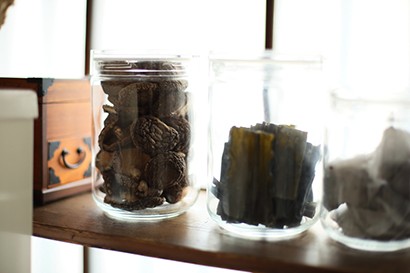
Like sansai, Japan has so many ingredients and dishes that even the Japanese can't eat all of them, right?
It’s been 20 years since I moved here, but even now I’m eating things I’ve never seen before. This country isn’t normal! Haha! I’ve been to a lot of different places, and with most countries I can spend two weeks there, eat most of the dishes there and get sick of them. It’s pretty incredible that Japan hasn’t done that to me yet. Even the same dish has a lot of different variations. The varieties, combinations, and everything that makes up shun creates a rich culinary culture.
What do you think of our culture that focuses on a concept like “shun”, making something that can be made in that time, and eating it in that time.
The concept of shun exists in any country, but whether or not they embrace it as a culture is crucial. There are a lot of places that focus too much on mass production and lose their shun. In Japan there are a lot of farmers who are making dishes on their own, so there’s an environment of protecting that culture here. Eating something that’s shun isn’t just delicious, it’s returning your body to how it should be naturally. It’s good for your health. For example, most animals only eat shun foods, right? Eating one thing in one season will cool you off, eating another thing in another season will warm you up, eating another thing will make you more resistant to illness. In other words, these foods have the power to fulfill what your body naturally needs or wants. The Japanese maintain a very natural lifestyle, and I think that’s what makes shun so important here.
In the U.S. the Native Americans had a tradition of respecting nature and living along side it, but when the age of mass production hit, all of that went away. However, in Portland, Oregon and a couple other places, there is a new movement dedicated to revisiting that lifestyle.
The great thing about Japan is that natural lifestyles are not a fad or a movement, it’s something passed down through generations and has held strong.
In the U.S. the Native Americans had a tradition of respecting nature and living along side it, but when the age of mass production hit, all of that went away. However, in Portland, Oregon and a couple other places, there is a new movement dedicated to revisiting that lifestyle.
The great thing about Japan is that natural lifestyles are not a fad or a movement, it’s something passed down through generations and has held strong.
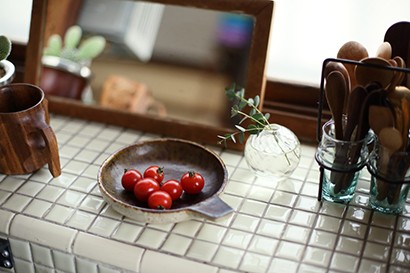
In 2020 the Olympics and Paralympics are coming to Tokyo, so I'm certain we will have a lot of foreign visitors from now on. What would you want to tell them about Japan?
I want them to know about all of the amazing places in the regions outside of Tokyo and Kyoto and all of usual tourist spots. I hope they don’t just eat sushi and tempura, but experience all of the dishes from the different areas. Staying at guest houses, buying seasonal vegetables at the grocery, and make something is a great way to spend time here.
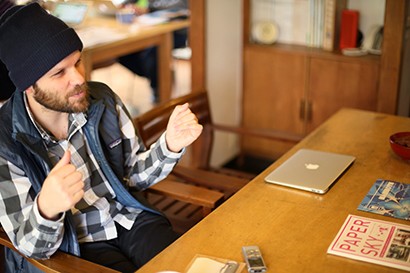
Thank you for your time. This is an incredible office you have here and the garden is beautiful.
Thank you. I’m really proud of it. These are persimmons. I eat the fruit from it, and in May I use the leaves to make tempura. You can even eat them just as they are, or salt them a little. I guess that’s shun right there. Come by and try them out for yourself sometime.
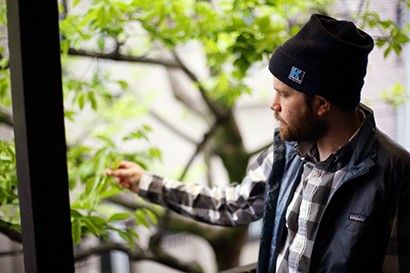
Writer : TAICHI UEDA
/
Photographer : CHIZU TAKAKURA

